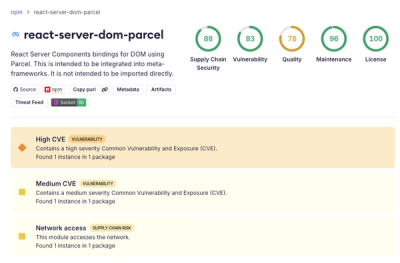


cli-color
Yet another colors and formatting for the console solution
Colors, formatting and other goodies for the console. This package won't mess with built-ins and provides neat way to predefine formatting patterns, see below.
Installation
$ npm install cli-color
Usage
Usage:
var clc = require("cli-color");
Output colored text:
console.log(clc.red("Text in red"));
Styles can be mixed:
console.log(clc.red.bgWhite.underline("Underlined red text on white background."));
Styled text can be mixed with unstyled:
console.log(clc.red("red") + " plain " + clc.blue("blue"));
Styled text can be nested:
console.log(clc.red("red " + clc.blue("blue") + " red"));
Best way is to predefine needed stylings and then use it:
var error = clc.red.bold;
var warn = clc.yellow;
var notice = clc.blue;
console.log(error("Error!"));
console.log(warn("Warning"));
console.log(notice("Notice"));
Note: No colors or styles are output when NO_COLOR env var is set
Supported are all ANSI colors and styles:
Styles
Styles will display correctly if font used in your console supports them.
- bold
- italic
- underline
- blink
- inverse
- strike
Colors
| black | bgBlack |  |
| red | bgRed |  |
| green | bgGreen |  |
| yellow | bgYellow |  |
| blue | bgBlue |  |
| magenta | bgMagenta |  |
| cyan | bgCyan |  |
| white | bgWhite |  |
Bright variants
| blackBright | bgBlackBright |  |
| redBright | bgRedBright |  |
| greenBright | bgGreenBright |  |
| yellowBright | bgYellowBright |  |
| blueBright | bgBlueBright |  |
| magentaBright | bgMagentaBright |  |
| cyanBright | bgCyanBright |  |
| whiteBright | bgWhiteBright |  |
xTerm colors (256 colors table)
Not supported on Windows and some terminals. However if used in not supported environment, the closest color from basic (16 colors) palette is chosen.
Usage:
var msg = clc.xterm(202).bgXterm(236);
console.log(msg("Orange text on dark gray background"));
Color table:

Reset
Terminal can be cleared with clc.reset
process.stdout.write(clc.reset);
Erase
clc.erase.screen
Entire screen
process.stdout.write(clc.erase.screen);
clc.erase.screenLeft
Left portion of a screen
process.stdout.write(clc.erase.screenLeft);
clc.erase.screenRight
Right portion of a screen
process.stdout.write(clc.erase.screenRight);
clc.erase.line
Current line
process.stdout.write(clc.erase.line);
clc.erase.lineRight
Right portion of current line
process.stdout.write(clc.erase.lineRight);
clc.erase.lineLeft
Left portion of current line
process.stdout.write(clc.erase.lineLeft);
Move around functions
clc.move(x, y)
Move cursor x columns and y rows away. Values can be positive or negative, e.g.:
process.stdout.write(clc.move(-2, -2));
clc.move.to(x, y)
Absolute move. Sets cursor position at x column and y row
process.stdout.write(clc.move.to(0, 0));
clc.move.up(n)
Move cursor up n rows
process.stdout.write(clc.move.up(2));
clc.move.down(n)
Move cursor down n rows
process.stdout.write(clc.move.down(2));
clc.move.right(n)
Move cursor right n columns
process.stdout.write(clc.move.right(2));
clc.move.left(n)
Move cursor left n columns
process.stdout.write(clc.move.left(2));
clc.move.lines(n)
Move cursor n lines forward if n is positive, otherwise n lines backward, and place it at line beginning
process.stdout.write(clc.move.lines(2));
clc.move.top
Move cursor to top of a screen
process.stdout.write(clc.move.top);
clc.move.bottom
Move cursor to bottom of a screen
process.stdout.write(clc.move.bottom);
clc.move.lineBegin
Move cursor to begin of a line
process.stdout.write(clc.move.lineBegin);
clc.move.lineEnd
Move cursor to end of a line
process.stdout.write(clc.move.lineEnd);
Terminal characteristics
clc.windowSize.width
Returns terminal width
clc.windowSize.height
Returns terminal height
Additional functionalities
clc.slice(str[, begin[, end]])
Slice provided string with preservation of eventual ANSI formatting
var clc = require("cli-color");
var str = clc.bold("foo") + "bar" + clc.red("elo");
var sliced = clc.slice(str, 1, 7);
clc.strip(formatedText)
Strips ANSI formatted string to plain text
var ansiStrip = require("cli-color/strip");
var plain = ansiStrip(formatted);
clc.getStrippedLength(str)
Get actual length of ANSI-formatted string
var clc = require("cli-color");
var str = clc.bold("foo") + "bar" + clc.red("elo");
clc.getStrippedLength(str);
clc.art(text, styleConf)
Create a text-graphical art. Within styleConf, string replacements needs to be defined, which are then used to convert text to styled graphical text.
var text = ".........\n" + ". Hello .\n" + ".........\n";
var style = { ".": clc.yellowBright("X") };
process.stdout.write(clc.art(text, style));
clc.columns(data[, options])
Outputs aligned table of columns.
data is expected to be an array (or other iterable structure) of rows, where each row is also an array (or other iterable structure) of content to display.
Supported options:
sep: Custom colums separator (defaults to |)columns: Per column customizations, as e.g. [{ align: 'right' }, null, { align: 'left' }]:
align: Possible options: 'left', 'right (efaults to 'left')
var clc = require("cli-color");
process.stdout.write(
clc.columns([
[clc.bold("First Name"), clc.bold("Last Name"), clc.bold("Age")],
["John", "Doe", 34],
["Martha", "Smith", 20],
["Jan", "Kowalski", 30]
])
);
throbber(write, interval[, format])
Writes throbber string to write function at given interval. Optionally throbber output can be formatted with given format function
var setupThrobber = require("cli-color/throbber");
var throbber = setupThrobber(function (str) { process.stdout.write(str); }, 200);
throbber.start();
throbber.stop();
Tests
$ npm test
Security contact information
To report a security vulnerability, please use the Tidelift security contact. Tidelift will coordinate the fix and disclosure.
Contributors
- @rentalhost (David Rodrigues)
- Help with support for nested styles. Introduction of
clc.art module, and significant improvements to tests coverage
- @StreetStrider
- Implementation of sophistcated
clc.slice functionality, and introduction of clc.getStrippedLength utility






















